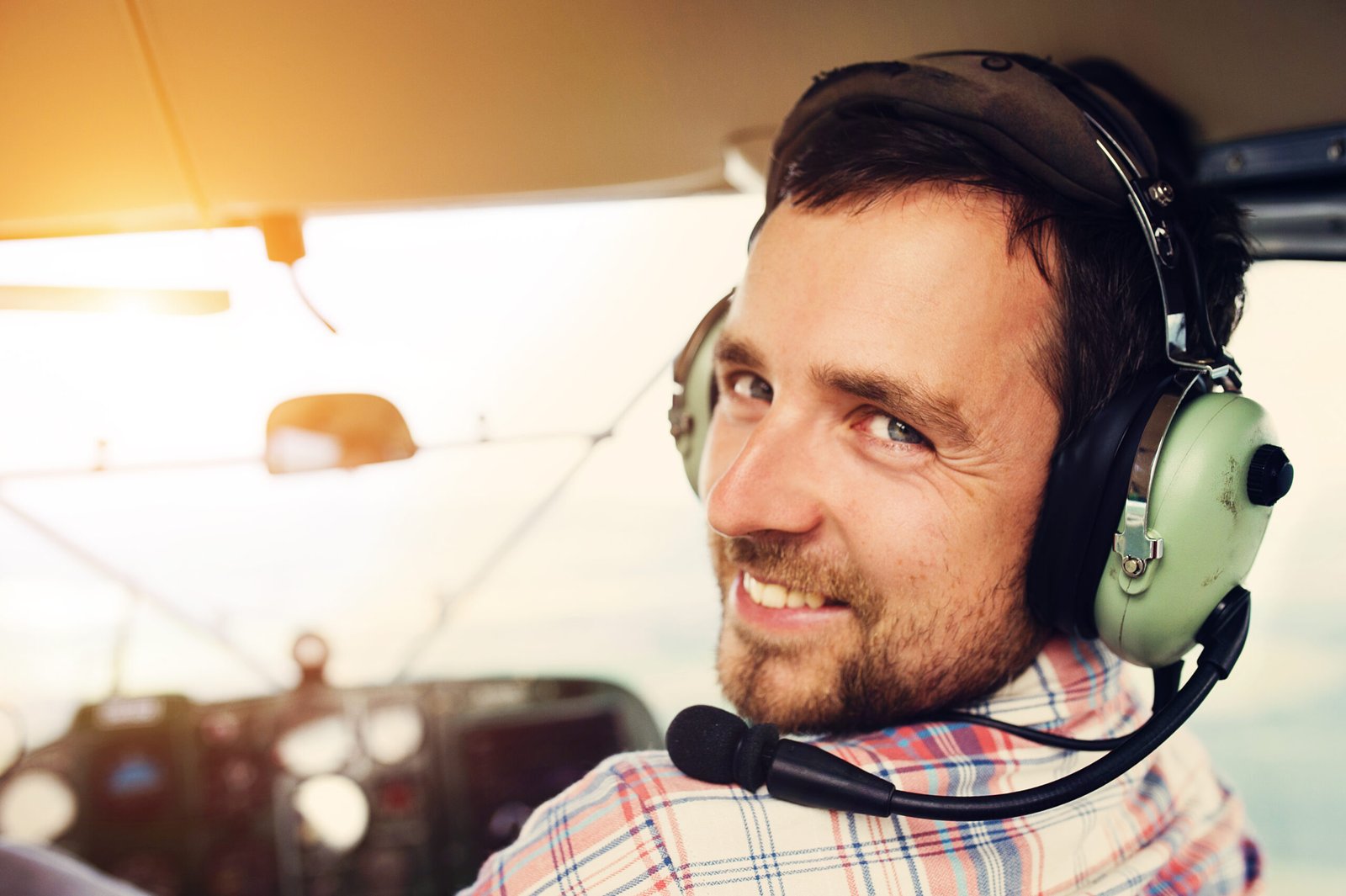aviation technology
Skyward Bound: Exploring the Best Aviation Experiences Around the Globe
Aviation is an exhilarating field where technology, passion, and precision intersect. From aspiring pilots to seasoned aviators, there’s a world of experiences waiting to be explored. Whether you’re looking to enhance your skills through training, stay updated with industry trends via blogs and websites, or dive into the burgeoning realm of drones, aviation offers something for everyone. Let’s embark on this journey through some of the best aviation experiences available worldwide.
First off, let’s talk about aviation and technology training. The future of flying hinges on cutting-edge simulators that allow budding pilots to hone their skills without ever leaving the ground. Simulators provide a realistic environment where one can practice maneuvers, emergency procedures, and navigation techniques under varying conditions. Leading institutions around the globe utilize state-of-the-art software that replicates real-world scenarios—some even featuring virtual reality components! This blend of tech and training not only enhances proficiency but also builds confidence in handling complex situations.
Now that you’re geared up for your flight training adventure, it’s essential to stay connected with the aviation community. Numerous blogs and websites offer valuable insights and discussions about everything from flight techniques to industry news. Some popular platforms include Aviation Week Network, The Points Guy for travel enthusiasts, and Airliners.net for aircraft spotting aficionados. Social media is another treasure trove; following accounts like @theaviationist on Twitter or Instagram could lead you down a rabbit hole of breathtaking aerial photography and inspiring stories from fellow aviators.
For those who prefer structured learning environments or are simply looking to expand their knowledge base online, several online aviation courses are available today. Institutions such as Embry-Riddle Aeronautical University provide comprehensive ground school programs covering topics like meteorology, navigation systems, and regulations set forth by the Federal Aviation Administration (FAA). These courses cater not just to aspiring pilots but also to individuals interested in roles such as air traffic control or aviation management.

Speaking of careers in aviation—let’s take a moment to consider job opportunities within this dynamic field! With commercial airlines expanding routes and private flying gaining popularity among business executives and leisure travelers alike, qualified pilots are always in demand. Websites like Pilot Career Center offer tools for job seekers while providing information about salary expectations based on experience levels across various sectors within aviation.
As we soar into modern advancements shaped by technology, drones have become a significant aspect of both recreational flying and professional applications—think aerial photography or agricultural monitoring! The FAA has established guidelines for drone usage that aspiring operators must understand thoroughly before taking flight. For those interested in becoming certified remote pilot operators through Part 107 licensing requirements set by the FAA—a worthy venture considering how rapidly this sector is growing—there are plenty of resources available online.
To wrap things up neatly amid all these exciting avenues awaiting exploration: if you’re serious about delving deeper into aviation culture while keeping abreast with regulations or safety protocols enforced by authorities like the FAA itself—their website offers extensive resources including educational materials tailored specifically for new pilots!
With so many paths beckoning you skyward—from simulator training sessions that mimic life at altitude to engaging with fellow enthusiasts across social media platforms—it’s clear that every corner of the globe holds unique chances for adventure in aviation! So suit up—and let your aspirations take flight!
The Hidden World of Cockpits: A Pilot’s Perspective on Modern Flight
When you think of aviation, the first images that might come to mind are sleek aircraft soaring through azure skies, passengers basking in comfort, or even the bustling activity at an airport. However, there’s a hidden world that many overlook—the cockpit. It’s a sanctuary of technology, training, and skill where pilots transform dreams of flight into reality.
In today’s aviation landscape, technology plays a pivotal role in shaping how pilots are trained and how they operate. Simulators have advanced beyond simple graphics and basic functions; they now offer immersive experiences that closely mimic real-life flying conditions. High-fidelity simulators replicate everything from turbulence to emergency scenarios, allowing aspiring aviators to hone their skills without ever leaving the ground. These simulators not only save time and resources but also provide invaluable training for managing unexpected situations.
For those looking to dive deeper into aviation knowledge, numerous blogs and websites cater to enthusiasts and professionals alike. Among the top choices are **AirlineReporter**, which offers insights directly from industry insiders, and **The Aviation Herald**, known for its detailed accident reports and safety analysis. Social media platforms like Instagram feature accounts such as @flywithcaptainmike showcasing stunning aerial views alongside pilot experiences. On Twitter, follow @AviationWeek for the latest industry news and trends.

Additionally, online courses have revolutionized how we approach learning about aviation. Ground schools like **King Schools** or **MZeroA** provide comprehensive programs covering everything from private pilot licensing to advanced instrument ratings—all accessible from your living room! Many of these courses combine video lessons with interactive quizzes ensuring that students grasp complex subjects effectively.
As the demand for qualified pilots continues to rise in the face of increasing air travel, job opportunities abound across various sectors—commercial airlines, cargo carriers, charter services, or even corporate jets. Organizations such as **Pilot Career Center** offer up-to-date job listings while providing resources for crafting resumes tailored specifically for aviation roles.

With technological advancements reshaping our skies further still is the emergence of drones—unmanned aerial vehicles (UAVs) changing everything from agriculture to photography. Drones are being integrated into commercial operations more than ever before; this means new career paths are emerging within this niche market! For those intrigued by drone piloting, consider exploring certification options through resources provided by organizations like the FAA or specialized drone schools.
Navigating regulations is crucial in both manned and unmanned flight operations. The Federal Aviation Administration’s website is a treasure trove of information—from rules governing pilot certifications to updates on airspace regulations affecting all operators. Bookmarking essential links can simplify staying informed on regulatory changes that could impact flying careers or hobbyist pursuits alike.
In conclusion, aviation is more than just flying; it’s about mastering a blend of technology and skillset that evolves continuously with modern demands. The cockpit encapsulates this journey—a place where rigorous training meets cutting-edge innovation—and it beckons those ready to take on the challenge. Whether you aspire to become a professional pilot navigating traditional routes or explore emerging fields like drone operations, there’s never been a better time to step into this exciting realm!
Navigating the Clouds: The Science Behind Modern Aviation
In today’s rapidly evolving world, aviation is at the forefront of technological innovation, blending science and artistry to create a seamless travel experience. From the moment a pilot steps into a cockpit to the thrilling ascent into the sky, modern aviation is an intricate tapestry woven with precision, training, and cutting-edge technology.
One of the most remarkable advancements in aviation is the use of flight simulators. These sophisticated tools allow aspiring pilots to hone their skills without ever leaving the ground. Simulators replicate real-world flying conditions with astonishing accuracy—from handling turbulence to navigating complex air traffic scenarios. This immersive training not only builds confidence but also ensures that pilots are well-prepared for any situation they might encounter in the air. Institutions like Embry-Riddle Aeronautical University and Purdue University offer comprehensive programs where students can train using state-of-the-art simulators, merging theory with hands-on experience.
For those looking to immerse themselves further into the world of aviation outside formal education settings, numerous blogs and websites serve as invaluable resources. Noteworthy platforms include:
1. **Airliners.net** – A community-driven site where aviation enthusiasts discuss everything from aircraft spotting to airline reviews.
2. **The Points Guy** – A blog focusing on maximizing travel rewards, which often delves into airline news and updates.
3. **AvGeekery** – An online magazine dedicated to all things aviation culture, offering insights from industry professionals.
4. **Flying Magazine** – Provides articles about flying techniques, aircraft equipment reviews, and personal stories from pilots.
Social media has also become an essential medium for connecting aviators around the globe. Platforms like Instagram showcase stunning aerial photography through hashtags such as #aviationlovers or #pilotlife, while Twitter hosts discussions on current events impacting air travel.

Additionally, numerous online courses and ground schools cater to various levels of interest in aviation. Websites like Udemy and Coursera offer tailored programs ranging from basic aerodynamics to advanced navigation techniques—perfect for anyone wanting to dip their toes into this fascinating field or professionals seeking continuing education credits. For those aiming for a pilot career path, obtaining a private pilot license (PPL) usually requires both ground school instruction and actual flight time under supervision.
As technology advances beyond traditional piloting methods, drones have emerged as another exciting frontier in aviation. From recreational use capturing breathtaking aerial footage to commercial applications delivering packages or performing inspections over vast landscapes, drones are revolutionizing various industries. The FAA regulates this burgeoning sector closely; thus understanding FAA guidelines is crucial for anyone interested in operating these unmanned vehicles legally.

To navigate these regulations effectively or explore job opportunities within aviation—be it piloting or drone operation—the FAA provides essential links through its official website [FAA.gov](https://www.faa.gov). Job seekers can find resources including guidance on how to become a commercial pilot or information about careers such as air traffic control.
In conclusion, modern aviation harmonizes technology with rigorous training processes that ensure safety and efficiency in our skies today. Whether you’re an aspiring pilot keen on mastering simulators or simply someone intrigued by drones’ potential impact on our daily lives—there’s no shortage of resources available at your fingertips! Embrace your passion for flight; who knows where it might take you?
Sky High: The Evolution of Aviation Technology and Its Future
Aviation has long captivated the human imagination, soaring through the skies and connecting distant corners of the globe. The journey from wood-and-canvas biplanes to today’s sleek jets is a testament to human ingenuity. As we look ahead, it becomes clear that technology will continue to shape how we fly, learn about aviation, and navigate the future of aerial transport.

### Aviation and Technology Training
One of the most remarkable advancements in aviation is the use of flight simulators for training pilots. These state-of-the-art devices offer a safe environment where aspiring aviators can experience various flight scenarios without ever leaving the ground. From turbulence to system failures, simulators provide invaluable hands-on experience while minimizing risks associated with real-life training flights. By incorporating virtual reality (VR) and augmented reality (AR), these training tools are becoming even more immersive, enhancing students’ learning experiences.
### Online Resources for Aviation Enthusiasts
The digital age has birthed a plethora of resources for aviation aficionados. Whether you’re a seasoned pilot or someone simply interested in flight mechanics, there are numerous blogs, websites, and social media platforms dedicated to this fascinating field. Here are some noteworthy mentions:
1. **Airliners.net** – A robust forum for aviation enthusiasts where you can share photos and experiences.
2. **The Points Guy** – Offers insights into maximizing frequent flyer miles while traveling.
3. **Fly Away Simulation** – A hub for flight simulation enthusiasts featuring news on software updates.
4. **Pilot’s Digest** – Covers everything from industry news to tips for aspiring pilots.
5. **Social Media Groups** – Platforms like Facebook have numerous groups such as “Aviation Enthusiasts” where members share stories, news articles, and personal experiences.
These online communities serve as an amazing source of information and inspiration.
### Learning Opportunities: Online Courses & Ground Schools
For those looking to embark on a career in aviation or simply expand their knowledge base, several online courses and ground schools are available today. Organizations like Coursera and Udemy offer comprehensive classes covering topics from aerodynamics to air traffic control procedures. Moreover, institutions like Embry-Riddle Aeronautical University provide specialized programs tailored for both new pilots and industry professionals seeking certification or advancement in their careers.
With remote learning now more accessible than ever, aspiring pilots can balance education with other commitments without compromising quality.
### Career Pathways: Becoming a Pilot

Pursuing a career as a pilot is an exciting prospect that requires dedication and skill development. After completing appropriate training programs—including Private Pilot License (PPL) or Airline Transport Pilot License (ATPL)—the next step often involves accumulating flight hours through various jobs such as flight instructing or flying charters before landing positions with airlines or cargo companies.
The demand for qualified pilots continues to grow globally—an encouraging sign for those considering this profession!
### The Rise of Drones
In recent years, drones have transformed not only recreational flying but also commercial applications within aviation sectors such as delivery services, agriculture monitoring, and surveillance operations. As regulations evolve—thanks largely to guidance from organizations like the FAA—the drone industry is expected to expand exponentially in various sectors while ensuring safety remains paramount.
#### Final Thoughts
As we gaze into the horizon of aviation technology‘s future landscape feels promising yet unpredictable; however one thing remains certain—the blend between innovation-driven solutions alongside traditional methodologies will define how we navigate our skies moving forward! For anyone passionate about flight—whether through piloting aircraft themselves or embracing technological advances—a world full of opportunities awaits!
The Future of Flight: Innovations Transforming Air Travel
The aviation industry is experiencing a renaissance, driven by groundbreaking technology that reshapes how we think about flying. From training the next generation of pilots to the burgeoning world of drones, these innovations promise to redefine air travel for years to come.
### Aviation and Technology Training: Simulators at the Forefront
One of the most significant advancements in pilot training is the use of flight simulators. These sophisticated devices create highly realistic flying environments, allowing budding aviators to hone their skills without ever leaving the ground. Modern simulators replicate various scenarios—from weather challenges to mechanical failures—enabling trainees to respond effectively under stress. This immersive experience not only enhances safety but also builds confidence in new pilots before they take to the open skies.
Additionally, many airlines and flight schools are adopting virtual reality (VR) technologies. VR provides an even more engaging learning experience, making it possible for students to interact with their surroundings in a way that traditional methods cannot match. As these tools evolve, so too will the quality of pilot training programs across the globe.
### A Treasure Trove of Resources: Aviation Blogs and Websites
For those passionate about aviation or seeking knowledge, numerous online resources cater specifically to this field. Here’s a curated list:
1. **Airline Pilot Central** – A great source for airline job listings and industry news.
2. **The Aviation Herald** – Offers insights into aviation safety events and incidents.
3. **Flying Magazine** – Covers everything from aircraft reviews to tips for aspiring pilots.
4. **AOPA (Aircraft Owners and Pilots Association)** – Provides resources for private pilots and enthusiasts alike.
5. **FlightAware** – Track flights in real-time and explore data trends.
Social media platforms have also become valuable tools for networking within the aviation community:
**Instagram** showcases stunning aerial photography and behind-the-scenes glimpses into life as a pilot.
**Twitter** serves as a quick news update hub—follow hashtags like #AvGeek or #PilotLife for instant access to trending topics.
**YouTube** boasts channels dedicated entirely to aviation education, including cockpit tours, tutorials on maneuvering aircraft, and simulator experiences.
### Online Aviation Courses: Ground Schools & Career Opportunities
In our digital age, aspiring pilots can now access an array of online courses tailored specifically for their needs. Many institutions offer comprehensive ground school programs that cover essential topics such as navigation principles, meteorology, and air traffic control regulations—all from your home! Platforms like Coursera and Udemy provide affordable options alongside respected institutions offering accredited courses.
Once equipped with knowledge from these programs, graduates can embark on exciting careers as commercial pilots or flight instructors—roles that promise not just adventure but also competitive salaries and benefits.
### The Drone Revolution: New Frontiers in Aviation
Drones have taken center stage in recent years, revolutionizing both recreational flying and commercial applications. With uses ranging from aerial photography to delivery services, UAVs (Unmanned Aerial Vehicles) are changing how goods are transported globally.
To ensure safe integration into national airspace systems, organizations like the FAA (Federal Aviation Administration) provide essential guidelines regarding drone operation. Their website offers valuable resources—including registration processes and operational restrictions—to help users navigate this new terrain responsibly.


As we look forward into this dynamic landscape of air travel advancements—from innovative training solutions to emerging technologies—the future indeed appears bright for both seasoned aviators and novices alike. The sky is no longer the limit; it’s merely an entry point into boundless possibilities!




